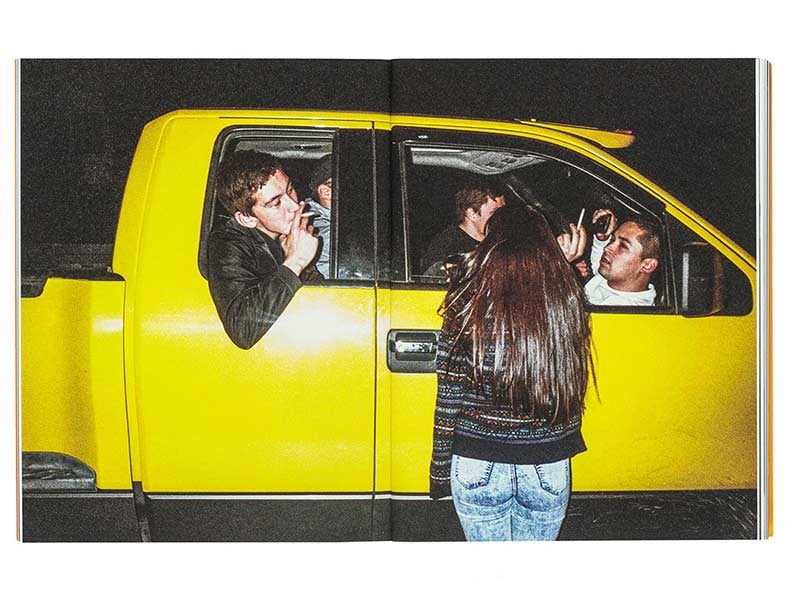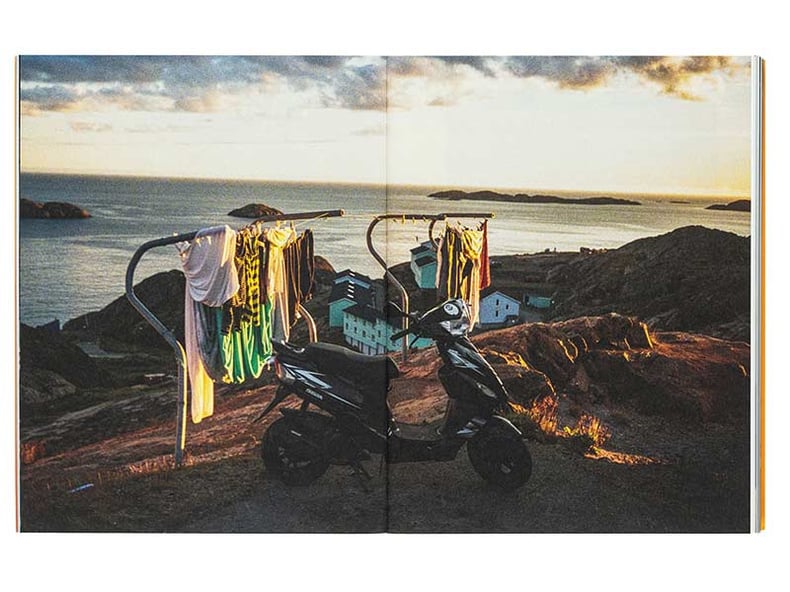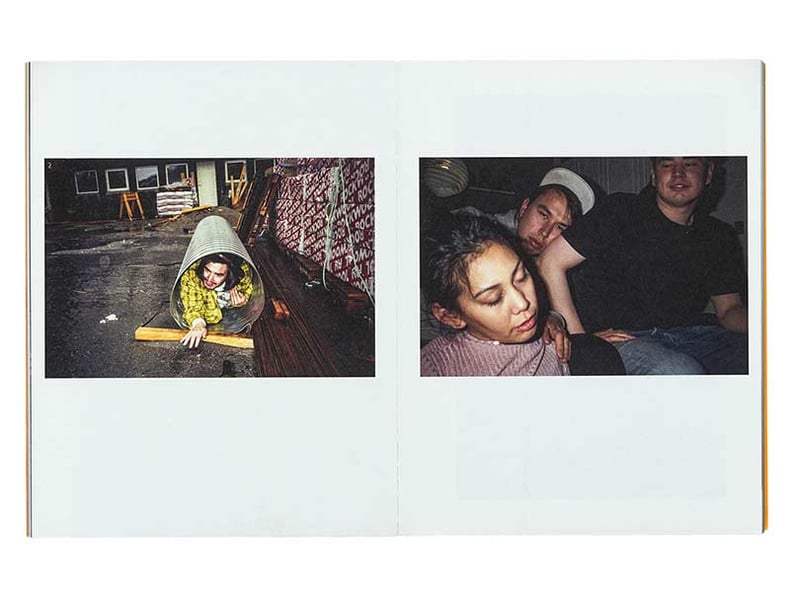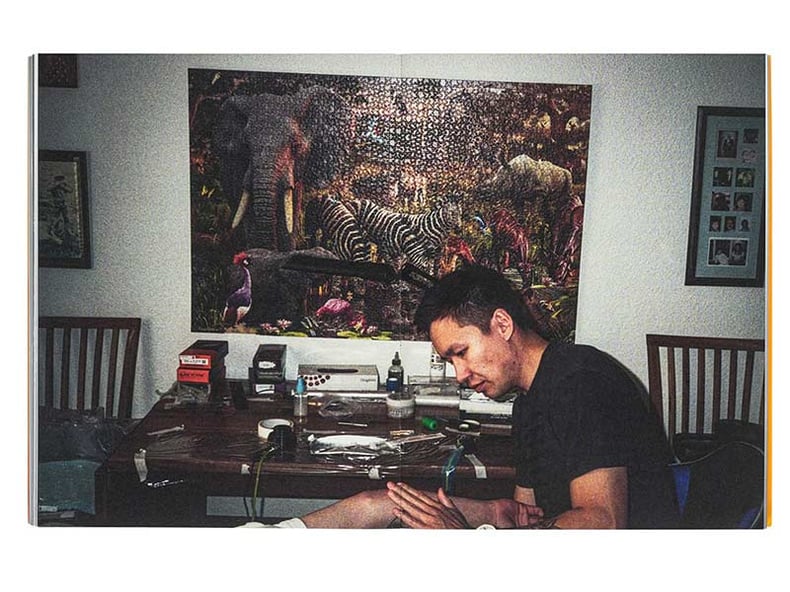In this month’s blog post we look at two recent books made in Greenland that focus on home and place with separate approaches.
Where Innuteq Storch (whose work will be showing in the Danish Pavillion at the Venice Biennale in 2024) uses colour photography to tell stories of everyday Greenlandic life, Jacob Aue Sobol uses harsh black and white photography to tell stories of fishing, hunting and becoming at peace with himself. In both cases, however, they are staying true to the place, the people, and the environments they are part of.
Image 1: A group of people gather around a yellow car in Greenland, Inuuteq Storch
Keepers of the Ocean by Inuuteq Storch begins with a dedication. ‘I would like to thank my friends and family and hometown,’ it reads. The town is Sisimiut in Greenland, and the dedication establishes that Storch is well and truly part of it.
It’s a book where Storch shows the daily life of Greenland; the climate, the landscape, the environment, the interiors are all there, serving as a backdrop against which Greenlandic people live their lives.
Image 2: View of a rocky seaside landscape with washing lines and a parked bike, Inuuteq Storch
They’re ordinary lives. People drive around in cars, boys meet girls, they fall in love, have parties. There are pictures on the wall, food cooking on the stove, people drinking at parties and clothes hanging on washing lines.
When he made the photographs, Storch was determined to make a book that showed Greenlandic people in a non-exoticised way, a way that didn’t use the kind of anthropological fetishisation of hunting, fishing, and non-modernity exemplified by Robert Flaherty’s dishonestly fictionalised Nanook of the North.
Image 3: Two page extract from Keepers of the Ocean, Inuuteq Storch
Instead, we see the relationships between people and the places where they live, the environments they inhabit. It’s a world that is harsh and at times claustrophobic and dark, but one that Storch has unique access to, a world that he is part of. And by showing that world in the way he does, one becomes, in a very small way, a part of it too. He extends our understanding, in a very simple way, of what it means to live in the far north.
Image 4: A man sits at a desk filled with various items, Inuuteq Storch
Buy Keepers of the Ocean by Inuuteq Storch
If you are interested in representation of indigenous peoples in photography, and in Greenland in particular Mette Sandbye’s article Blasting the Language of Colonialism: Three Contemporary Photo-Books on Greenland, is the place to go. In this, she describes how Greenland had been photographically defined by a European fixation with the paraphernalia of hunting.
Ready to dive deeper into the captivating world of photobooks? Discover how the MA Photography course at Falmouth Flexible can elevate your storytelling through visuals. Unleash your creativity and find out more today:

Image 5: James, a local Greenlandic man sits on an armchair, Jacob Aue Sobol
One of the key photographers she mentioned as going beyond the exoticisation of a people was Jacob Aue Sobol. Ironically, his latest book, James’ House, is very much to do with hunting, but hunting as a vehicle for Sobol’s journey to belonging.
The pictures in the book were made around the same time as those in Sabine, Sobol’s book on his relationship with a local Greenlandic girl. James House covers the same period but focusses on James, a Greenlandic man who Sobol befriends and learns to hunt from.
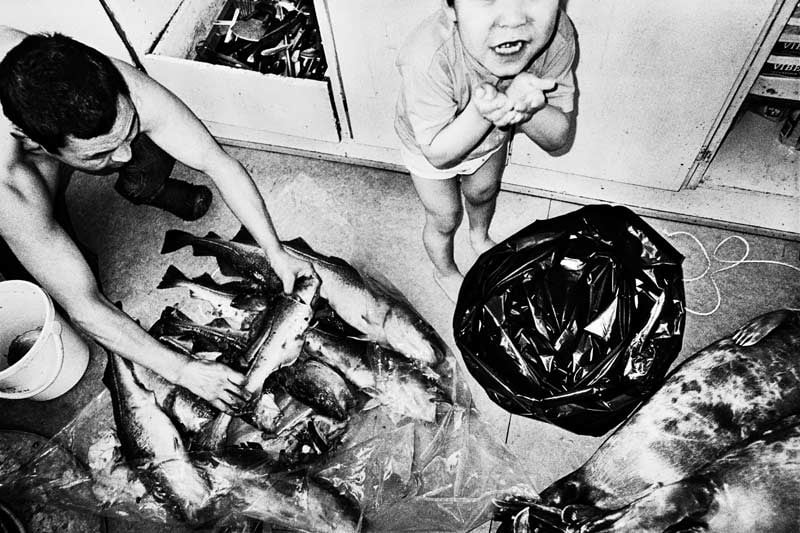
Image 6: A man and child examine a bag of freshly caught fish, Jacob Aue Sobol
Ostensibly, the book is about hunting. We see the snow-swept landscape, the rocks, the ice-flows, and the holes through which Sobol and James catch their fish.
It’s a big book, and straight in there’s a full bleed double page spread of a bunch of fish by the hole in the ice they were caught from. It’s dark, it’s grainy, and the fish look like prehistoric creatures hauled from the bottom of the sea from another time. The ice-hole is black, a gateway into another world, a world which is hostile to the human presence.
There are more fish, dead seals, dogs, sleighs, and a climate that will kill you in minutes if you don’t respect it.
Beyond that, however, is the house of the title, the house that James and Sobol return to after their hunting expeditions. It’s not a big house, it seems claustrophobic at times, but in Sobol’s pictures it is bursting with life.
This is the place where Sobol, recovering from a family tragedy, first began to photograph seriously. It’s where he fell in love, and where he learned to fish. It’s the centre of all life, a nexus in the community where family and friends come to cook, eat, play, and generally have a good time.
Unlike Keepers of the Ocean, James House is made from the perspective of an outsider. At the same time, it is made from that same perspective of photographing what you know, being true to who you are and the place you are living. It’s a book made with love, and Sobol’s understanding of who he is and where he sits in the world. And in James House, that world is Greenland, the small village of Tiniteqilaaq, and the water and ice that surrounds it.
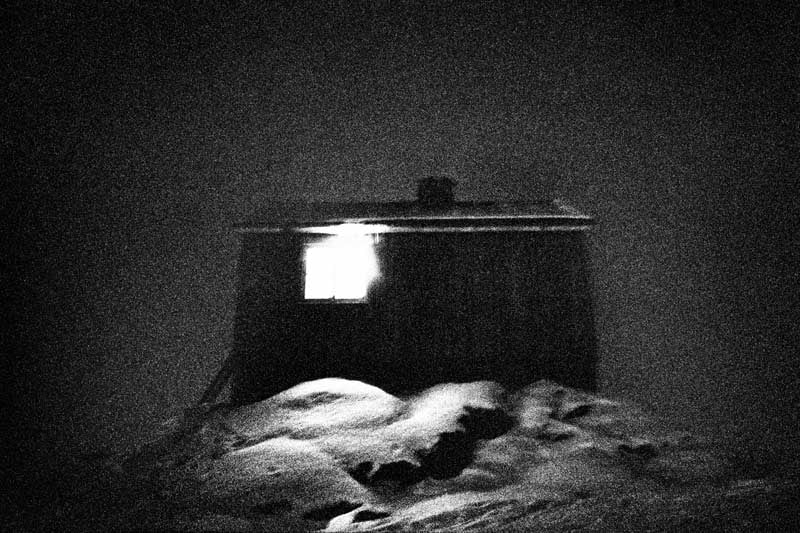
Image 7: James' hunting house, Jacob Aue Sobol
Buy James' House by Jacob Aue Sobol
Read more about Photobooks in previous blogs:
- The Grid: Bringing Order, Comparison and Narrative to the Story
- Laia Abril and Rafal Milach: Windows on the world of Misogyny
- Women and Photobooks: Unwriting History
- Photobooks and Collaboration
- Ernest Cole, Photography and Justice
- Photography and Brexit
- Arian Christaens and Returning the Gaze
- Photobooks and the City Destroyed
- Photography and Grief
- Photobooks and the Immersive Landscape
Read more about James' House in part 1 and part 2 of a frank and honest interview with Jacob Aue Sobol.
Read Mette Sandbye’s article, Blasting the Language of Colonialism: Three Contemporary Photo-Books on Greenland.
 Colin Pantall is a photographer, writer and lecturer and teaches on the MA Photography programme at Falmouth University.
Colin Pantall is a photographer, writer and lecturer and teaches on the MA Photography programme at Falmouth University.
.webp)
